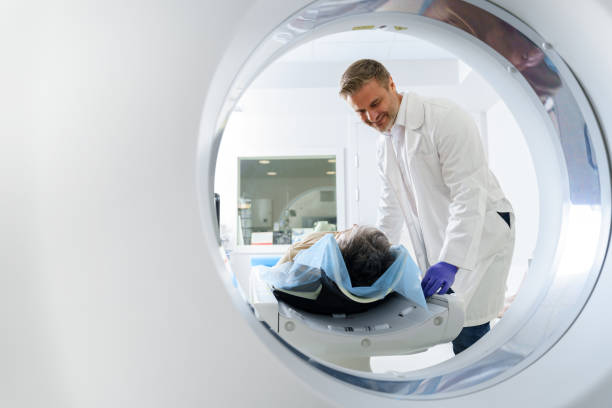
In the world of modern medicine, imaging technologies play a pivotal role in diagnosing and treating a variety of health conditions. One of the most valuable tools in medical diagnostics is the computed tomography CT scan, also known as a CAT scan. This non-invasive procedure has transformed how
doctors identify internal problems, helping them make quick, accurate diagnoses that can ultimately save lives.
CT scans use a combination of X-rays and computer technology to produce detailed cross-sectional images of the body. They enable healthcare providers to detect problems that might not be visible through other methods, such as physical exams or traditional X-rays.
1. Early Detection of Cancer
Cancer is one of the leading causes of death worldwide, but early detection can dramatically improve a patient’s chances of successful treatment. CT scans play a critical role in identifying various types of cancer, including lung, colorectal, pancreatic, and brain cancer. In many cases, CT scans can detect tumors early, often before symptoms manifest.
For example, a lung CT scan can identify early-stage lung cancer, even in individuals who show no outward symptoms. When cancer is diagnosed early, treatment options such as surgery, chemotherapy, or radiation therapy are often more effective, potentially saving lives by preventing the cancer from spreading.
2. Identifying Internal Injuries After Trauma
Accidents and trauma, whether due to car crashes, falls, or sports injuries, can result in internal injuries that are not immediately apparent. A CT scan can be used to quickly assess internal damage, identifying injuries to organs, blood vessels, and bones.
This is especially important in emergency situations where time is of the essence. For instance, in cases of head trauma, a CT scan can reveal brain bleeding, fractures, or swelling, enabling medical professionals to intervene swiftly. Early intervention can prevent further complications, including brain damage, hemorrhaging, or organ failure, significantly increasing the chances of survival and recovery.
3. Detecting Blood Clots and Stroke
A CT angiogram, a special type of CT scan, is instrumental in detecting blood clots, which are responsible for causing strokes. Stroke can occur when a clot blocks blood flow to the brain, leading to brain cell death.
CT scans can detect such blockages in the arteries and blood vessels, allowing doctors to immediately take action, such as administering clot-busting medications or performing surgery to remove the clot.
The ability to detect a stroke early improves outcomes significantly. Studies have shown that patients who receive timely intervention have a better chance of recovering without long-term disability or even death.
4. Diagnosing Heart Conditions
CT scans are also crucial in diagnosing a variety of heart-related issues. A coronary CT angiography can provide detailed images of the coronary arteries, allowing doctors to assess for blockages, a condition that can lead to a heart attack.
By identifying narrowed or blocked arteries, doctors can recommend lifestyle changes, medication, or surgery to restore proper blood flow and reduce the risk of a heart attack. Additionally, CT scans are useful in evaluating other heart conditions like aortic aneurysms, which can rupture and lead to life-threatening complications.
Early detection through CT imaging can result in life-saving interventions such as surgery or stent placement.
5. Evaluating Abdominal Conditions
CT scans can diagnose or better understand a range of conditions affecting the abdomen, from appendicitis to kidney stones. They provide detailed images of the organs, tissues, and structures within the abdomen, including the liver, kidneys, pancreas, and intestines.
When someone presents with severe abdominal pain, a CT scan can help pinpoint the underlying cause. For example, in the case of appendicitis, the CT scan can confirm inflammation or infection of the appendix, enabling doctors to make a quick decision about surgery to remove the appendix before it bursts.
Additionally, CT scans are critical in diagnosing kidney stones, tumors, infections, or gastrointestinal conditions that require immediate medical attention.
6. Monitoring Disease Progression and Treatment
CT scans are useful for diagnosing diseases and monitoring their progression and the effectiveness of treatments. In patients undergoing cancer treatment, for example, CT scans can be performed at regular intervals to determine whether a tumor is shrinking in response to chemotherapy or radiation therapy.
For chronic conditions like emphysema or pulmonary fibrosis, CT scans help doctors monitor lung damage and disease progression. By tracking changes in a patient’s condition over time, medical professionals can adjust treatments, providing a more personalized and effective approach that can ultimately save lives.
7. Guiding Surgical Procedures
In certain situations, CT scans are used more proactively by guiding surgeons during complex operations. CT-guided surgery allows surgeons to plan and execute procedures more precisely by providing real-time imaging.
For instance, during brain surgery or spinal procedures, CT scans can guide the surgeon in positioning their instruments accurately, reducing the risk of damage to surrounding tissues. This technology is also used for biopsies and needle-based treatments, where precise targeting is critical for success.
By enhancing the accuracy of surgeries and procedures, CT scans help improve outcomes, reduce complications, and, ultimately, save lives.
Conclusion
The versatility of the CT scan in diagnosing various conditions cannot be overstated. From detecting cancer early and identifying life-threatening internal injuries to aiding in heart disease diagnosis and guiding surgical interventions, CT scans have proven to be indispensable tools in modern medicine.
CT scans provide doctors with detailed, clear images of the body’s internal structures, enabling faster and more accurate diagnoses and timely interventions that can make the difference between life and death.
Whether it’s a trauma patient in the emergency room, someone undergoing cancer treatment, or an individual at risk for heart disease, the ability to identify and treat conditions early can dramatically improve health outcomes and, in many cases, save lives.





Leave a Reply